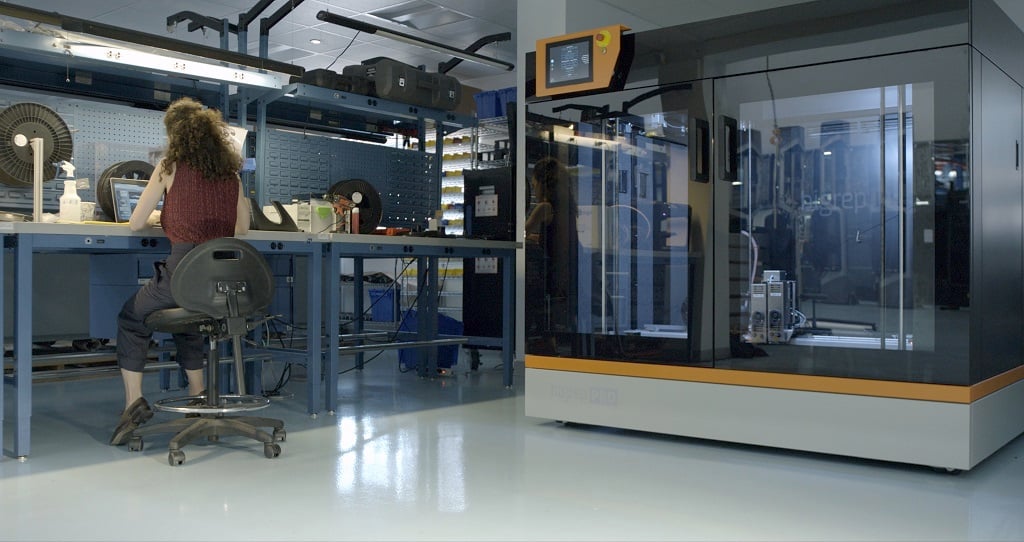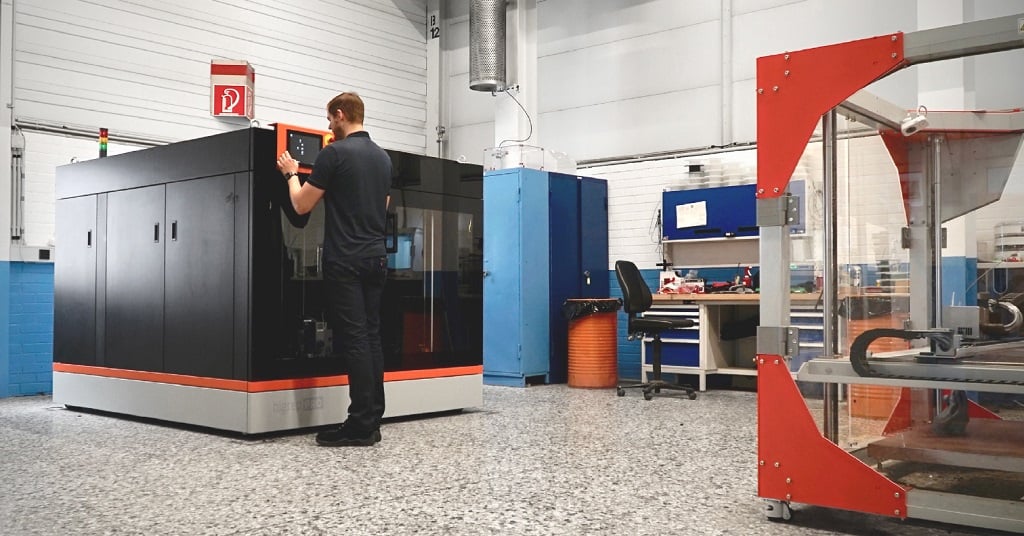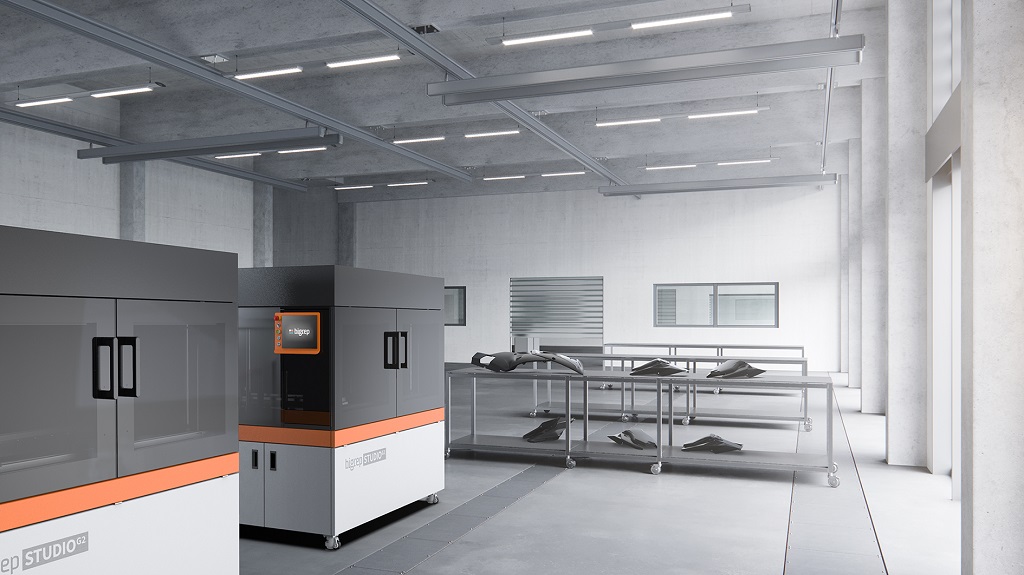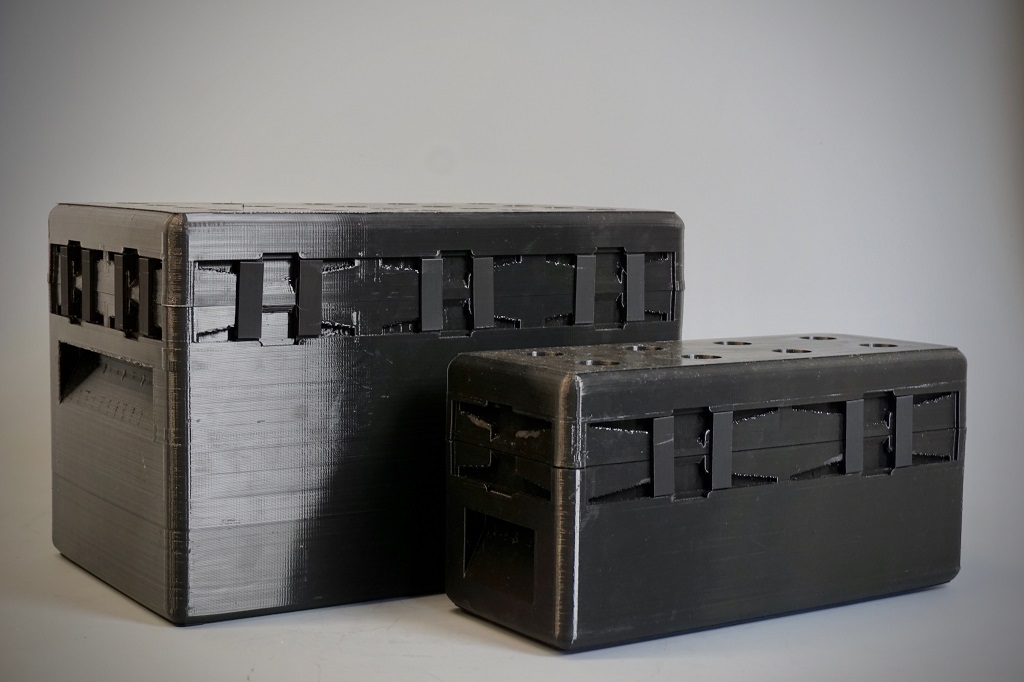
SPONSORED CONTENT
As the global supply chain is focusing on transitioning for better agility, large-format 3D printing from BigRep offers a few interesting ways to integrate advanced manufacturing throughout operations.
We often hear about how 3D printing is changing the shape of the traditional supply chain, and these conversations are only becoming more prevalent following successes using these technologies to address pandemic-driven immediate needs since the early part of 2020. The benefits for bringing 3D printing into operations are becoming ever more apparent: localized production capabilities, stop-gap supply chain solutions, capability for low-volume end-use manufacturing.
But what does that actually look like in practice — and how could large-format 3D printing expand not only build volumes but business opportunities?
Frank Marangell, the President of BigRep America and CBO of BigRep GmbH, offers insights into some applications where large-format 3D printing has proven key to success and how those may just be starting points for an even bigger future ahead.
In-House Supply Chains

Adopting in-house 3D printing brings new possibilities to operations. One example Marangell pointed to is the 3D printing of large parts instead of using an injection mold that could alone cost half a million dollars.
That example may seem pretty specific, and it is — because it’s among a growing stable of use cases BigRep’s customers have seen.
An eBook from the company covers how nine industrial companies, from Ford and Airbus to JC Steele & Sons and Geiger Group have seen lead times drop substantially. In Ford’s case, for example, 3D printing tooling in-house resulted in a 94% drop in lead times — that’s a 2-3 day turnaround instead of an outsourced 8-10 week wait. For JC Steele, turning to 3D printing for metal casting operations ultimately led to a 75% reduction in expenses and more than 50% increase in annual productivity.
Bringing 3D printing operations to the manufacturing floor offers an ease and flexibility that are showing tangible results in business performance. That case is only becoming more common now as 2020 continues on, with ongoing disruptions to traditional supply chains as the global pandemic has seen borders close and both domestic and international travel and supply hit hard.
You Get What You Pay For

As 3D printing continues to make headway into more traditional manufacturing workflows, some hesitation points remain — a big one is cost. It’s expensive to invest into a new technology suite and kit out all that the new processes require. There’s the investment into a 3D printer, training to use it, new software, and supplies for post-processing finished print jobs.
It can, then, be tempting to look for a lower-cost option, especially when you’re newer to the technology. A common customer caveat remains even here, though: buyer beware / you get what you pay for. Not all 3D printing technologies are built equally, and before pulling out that corporate credit card you’re hopefully doing your research to ensure your system of choice is the right fit for you, even if the initial costs are higher than hoped.
“Sometimes when you buy the cheap alternative you get disappointed, or it just may not meet your needs,” Marangell cautions. “There are a lot of reasons why a good, established organization is a lower risk, and that might be worth paying a little extra.”
Especially when it comes to large-format 3D printing, there are few providers out there offering industrial quality. Scaling up an extrusion-based 3D printer isn’t as simple as just maxing out the X, Y, and Z axes; significant engineering goes into ensuring print quality hits all the right marks, consistently, through even a one-cubic-meter build envelope.
“Large is not easy; many people try to do it, but run into quality or reliability issues to make a big part. You can’t just make a big bed and put an XYZ motor and extruder on and say, ‘Now I can do one meter cubed’,” Marangell said. “There are many years of expertise in this that BigRep brings to the table.”
BigRep has been dedicated to large-format 3D printing since 2014, and continues to focus on realistic, realizable quality.
While other companies also lock users into proprietary materials, that business model may not, for the user, be sustainable as 3D printing moves further into production applications. The cost structure required for end-use parts is different than that needed in prototyping stages, and maintaining cost efficiency may not be possible when moving with this type of model into production. While 3D printing is often touted as offering “freedom of design,” Marangell noted that sometimes “design costs are a lot more free than the manufacturing costs.”
Large-Format Solutions Provider
On top of supplying systems like the BigRep ONE, BigRep Studio G2, and BigRep PRO, BigRep is also looking to be a solutions provider to fulfill 3D printing needs backed by experts.
“We have an engineering solutions team, and they’re coming out with a solution for manufacturing engineers who don’t know 3D CAD to implement 3D printed jigs and fixtures easily into their factories. With this BigRep configurator, manufacturing engineers can then easily and automatically create a fixture,” Marangell explained. “We’re not just a systems provider, we want to provide solutions and benefits to customers.”

Among those customers, in addition to those already touched on, are those like JAMADE and Airbus that have really unique needs.
JAMADE, for example, makes the AMAZEA underwater scooter, which will be 75% 3D printed using engineering-grade materials.

Airbus is using large-format 3D printing to eliminate a regular expense of up to $10,000 by reinventing a traditional manufacturing workflow with on-demand custom investment shipping cases. The aerospace giant often has a need to ship delicate aviation equipment, and creating custom shipping containers is offering exactly the dimensions and contents security needed every time, ensuring secure timelines on aerospace equipment repairs, predictable logistics during unforeseen complications, and massive savings.
“Little things like DfAM [design for additive manufacturing] tips and tricks can make for a faster, more reliable, and more consistent part,” Marangell said. “We’re seeing that we’re not a system sales company anymore, we’re more a solutions sales company, developing complex solutions for customer value.”
In addition to these other solutions available, BigRep is also looking at other avenues to make it as easy as possible for potential customers to gain access to large-format 3D printing — even if they don’t necessarily need it for the long haul. A six-month rental is now an option, for example, as the company has introduced a leasing partnership.
On the services side, Marangell notes that BigRep’s 3DPARTLAB is offering to print large-format parts “with prices that are less than the market by design, so they can help you get into additive.”
Finding the right fit throughout, whether that be understanding the value proposition for a single tooling application or ramping up to end-use production or a short-term project, is important for the future of adoption. More versatile options to take that first step into large-format 3D printing are opening doors around the world for a variety of applications already. Will yours be next?
Via BigRep
